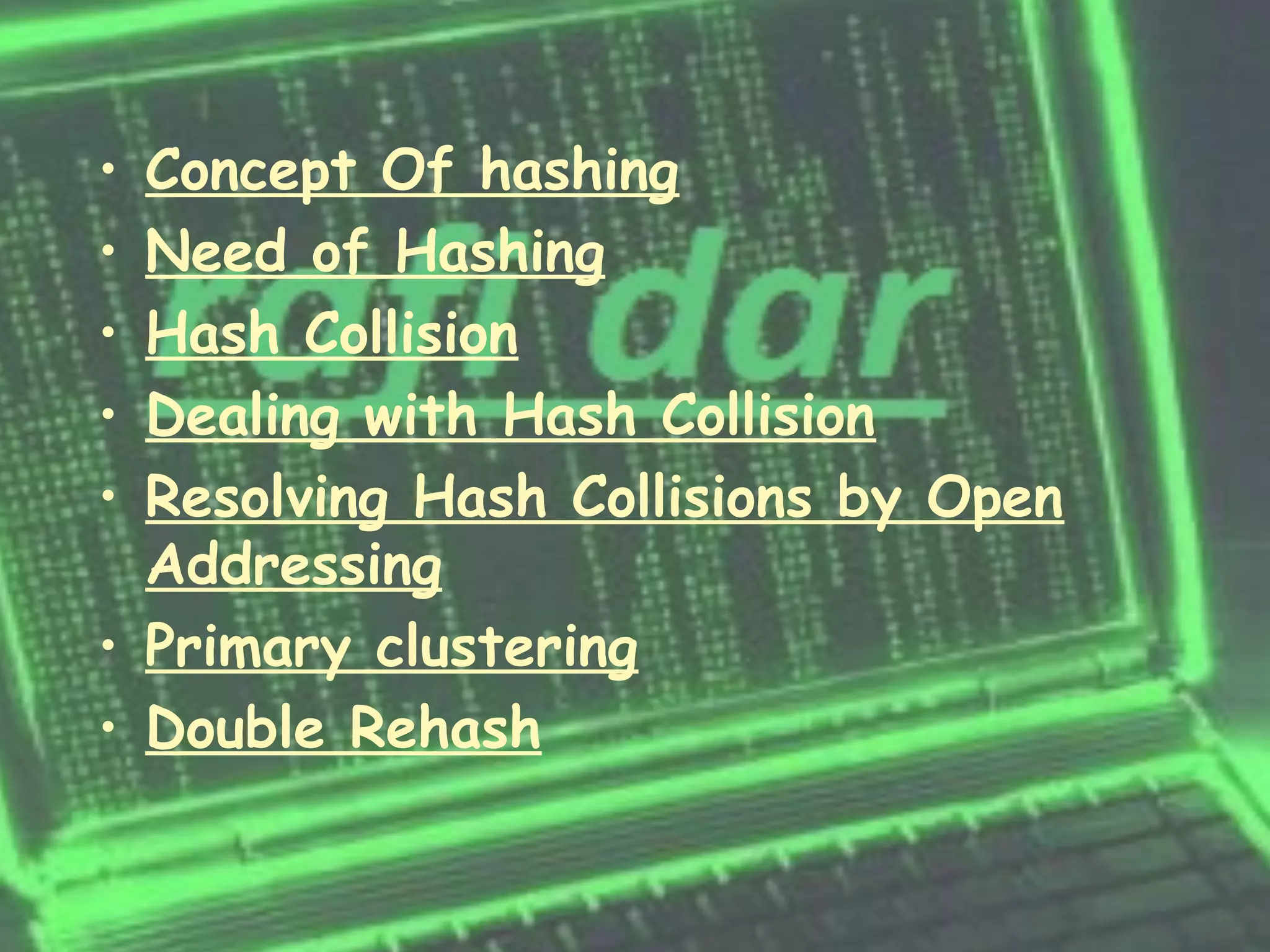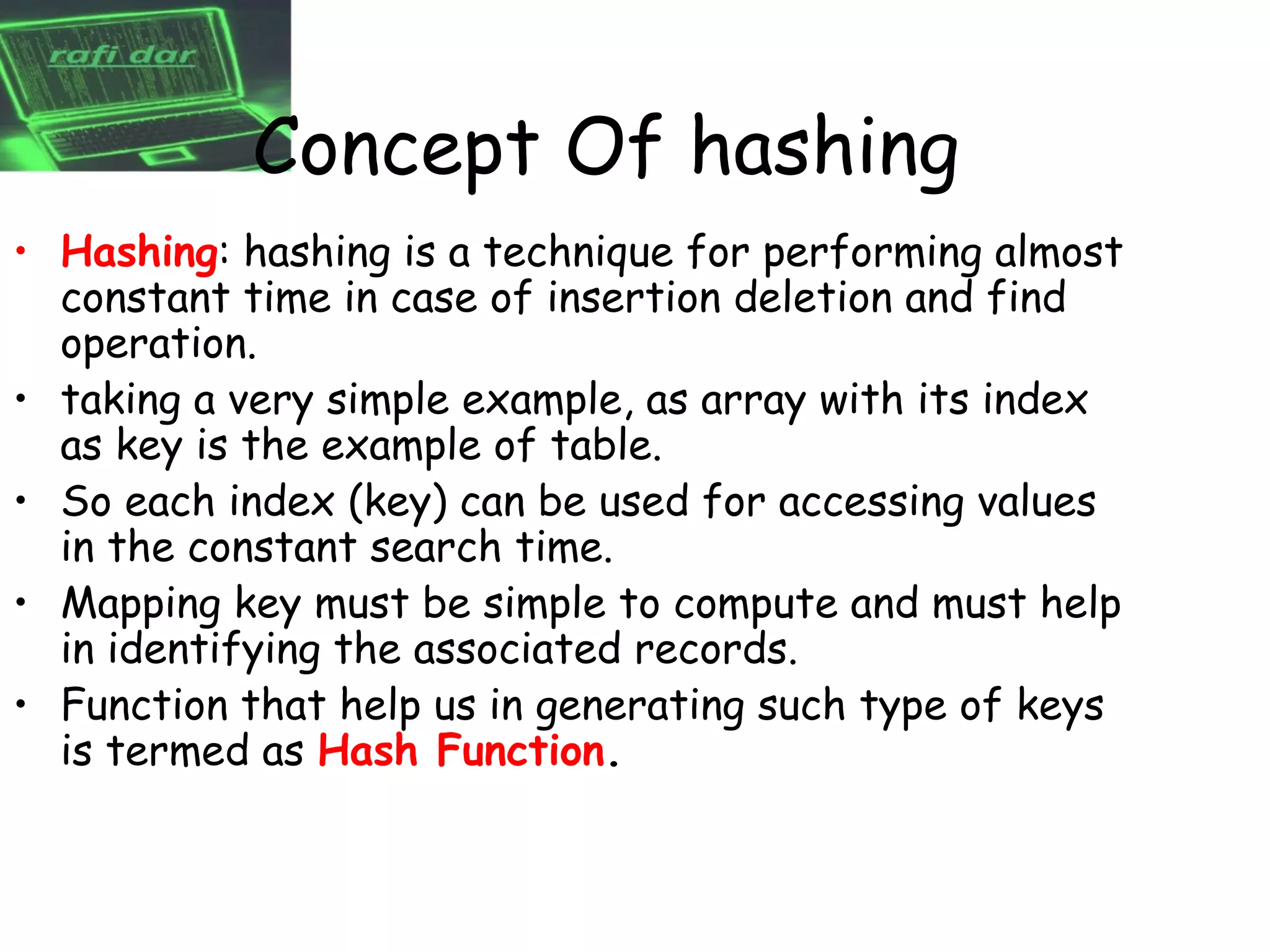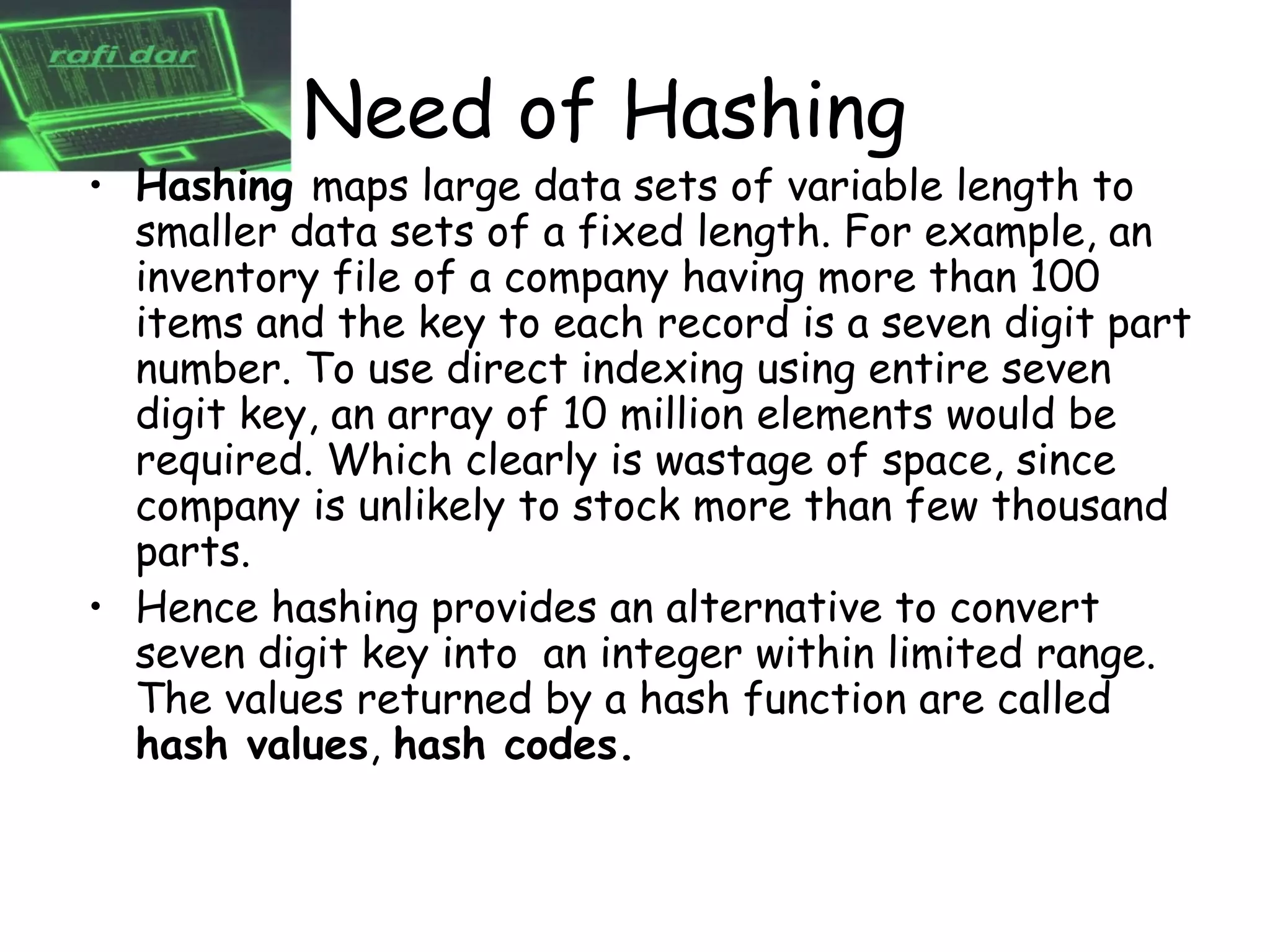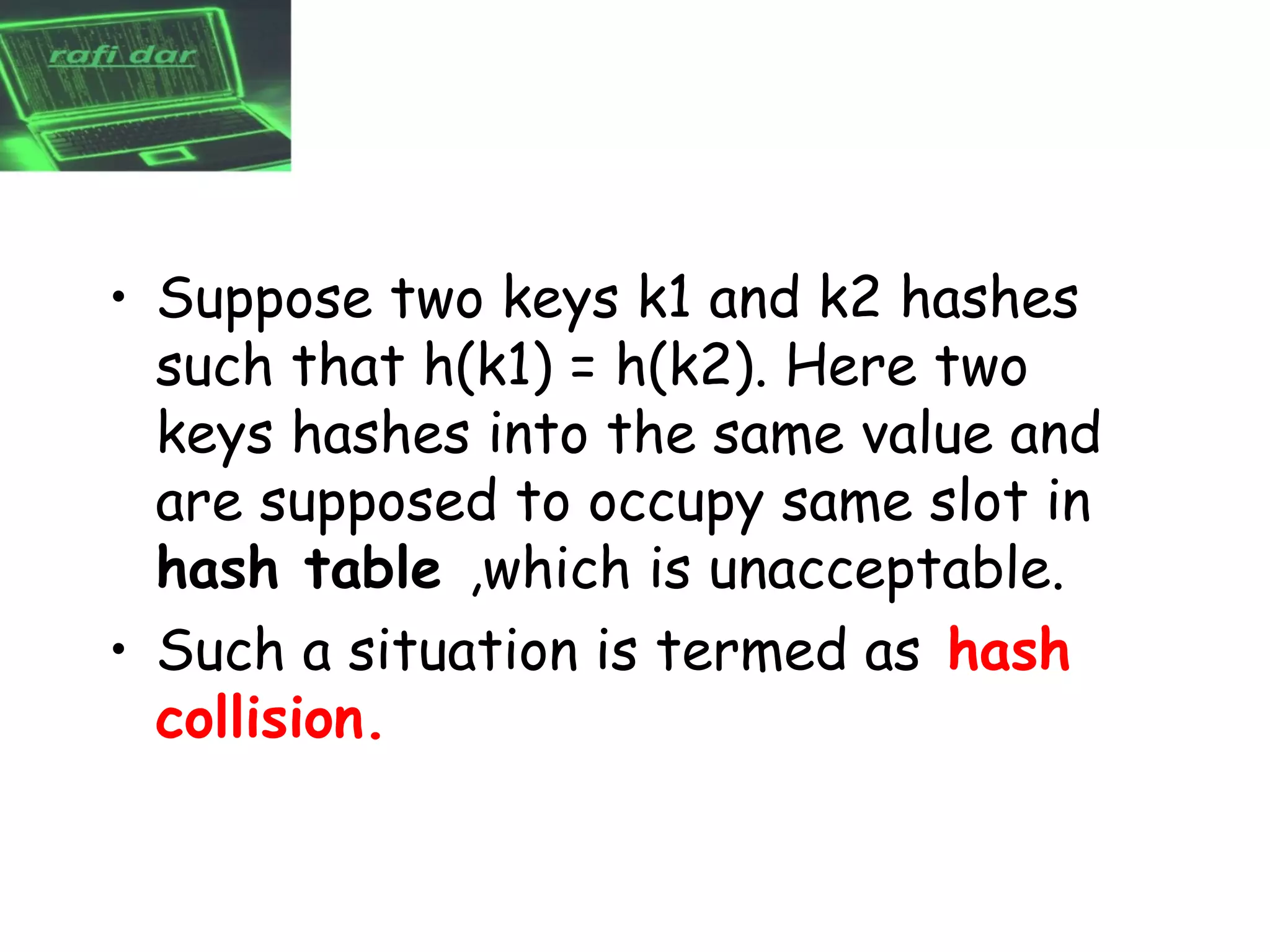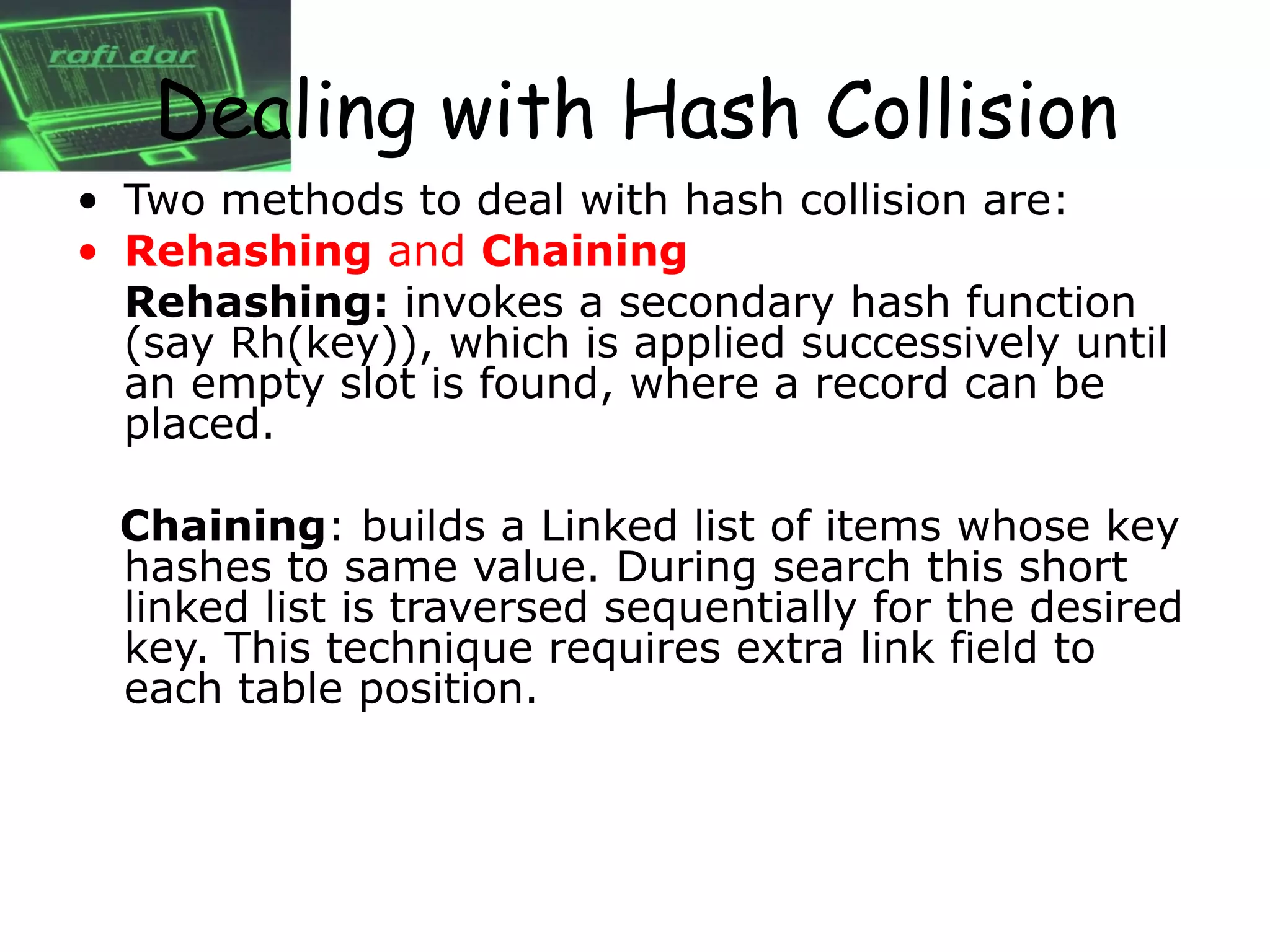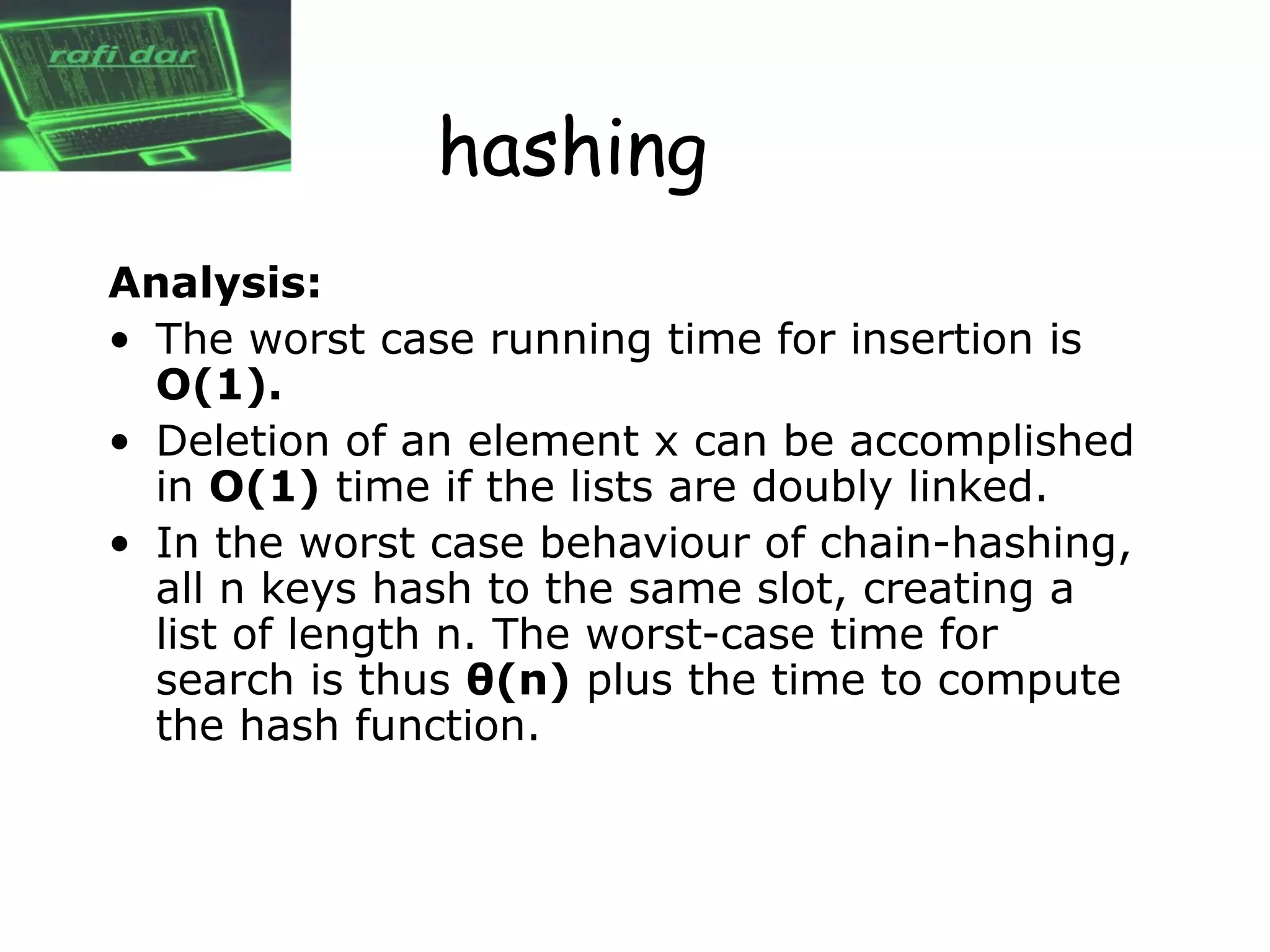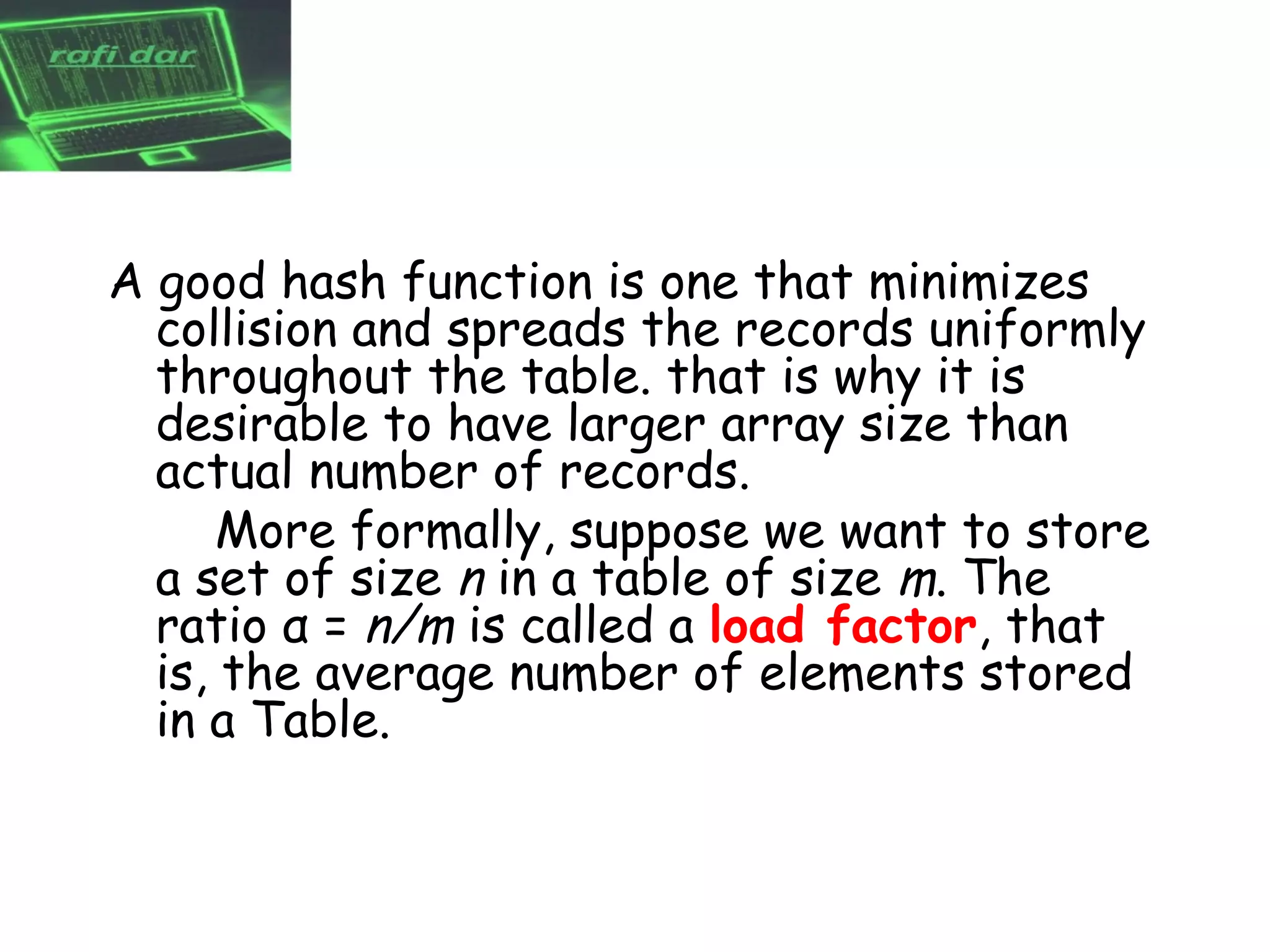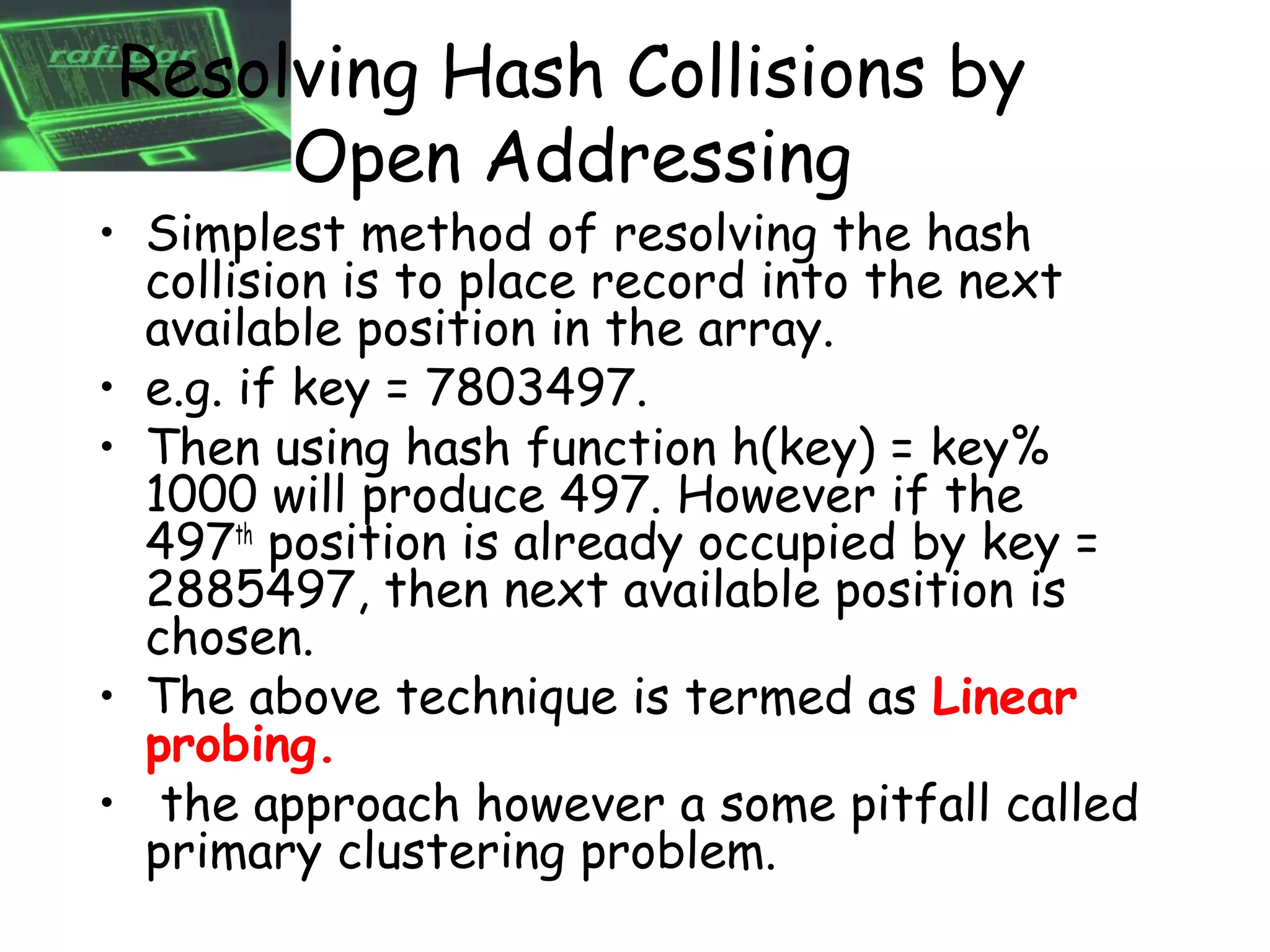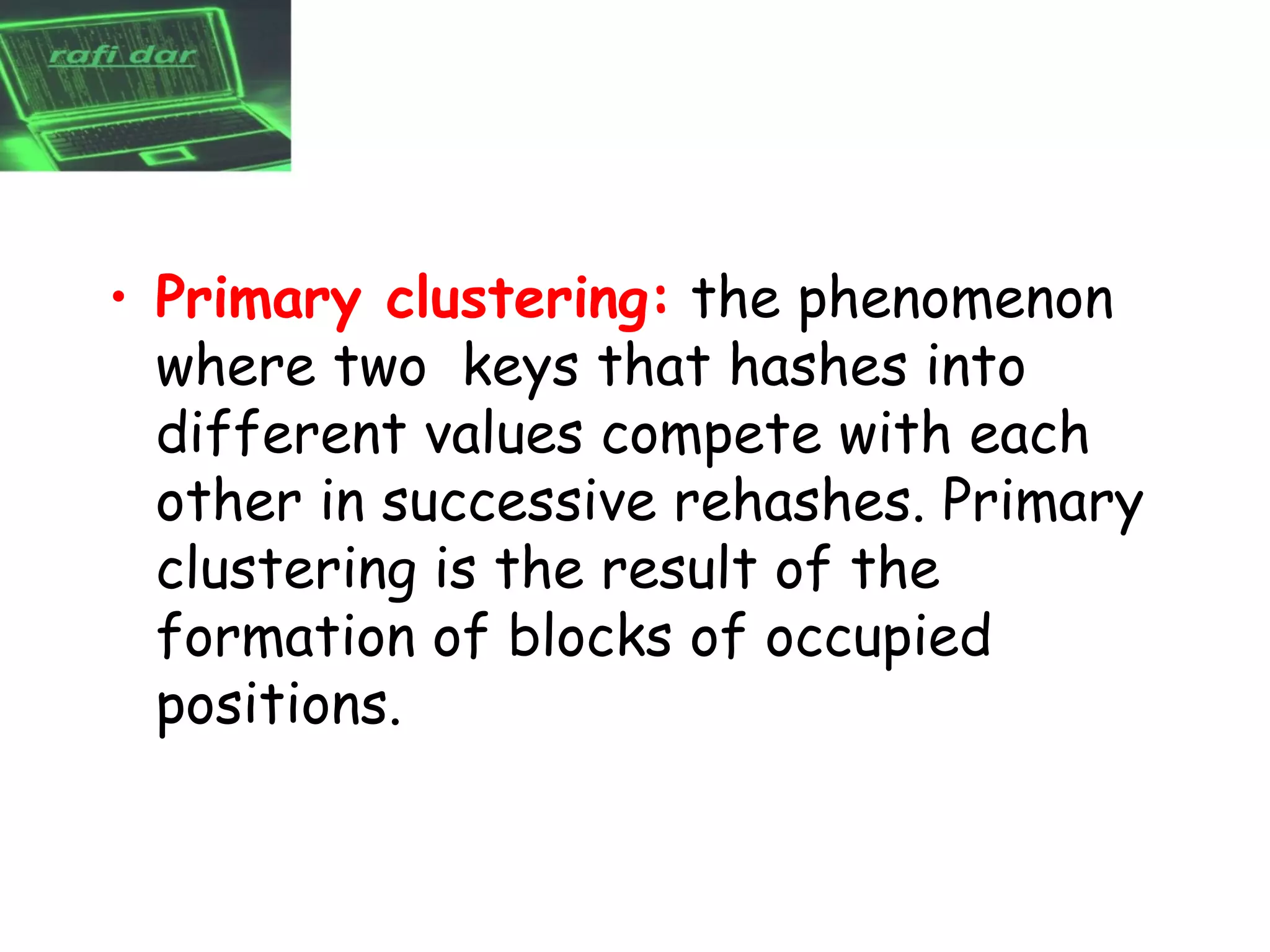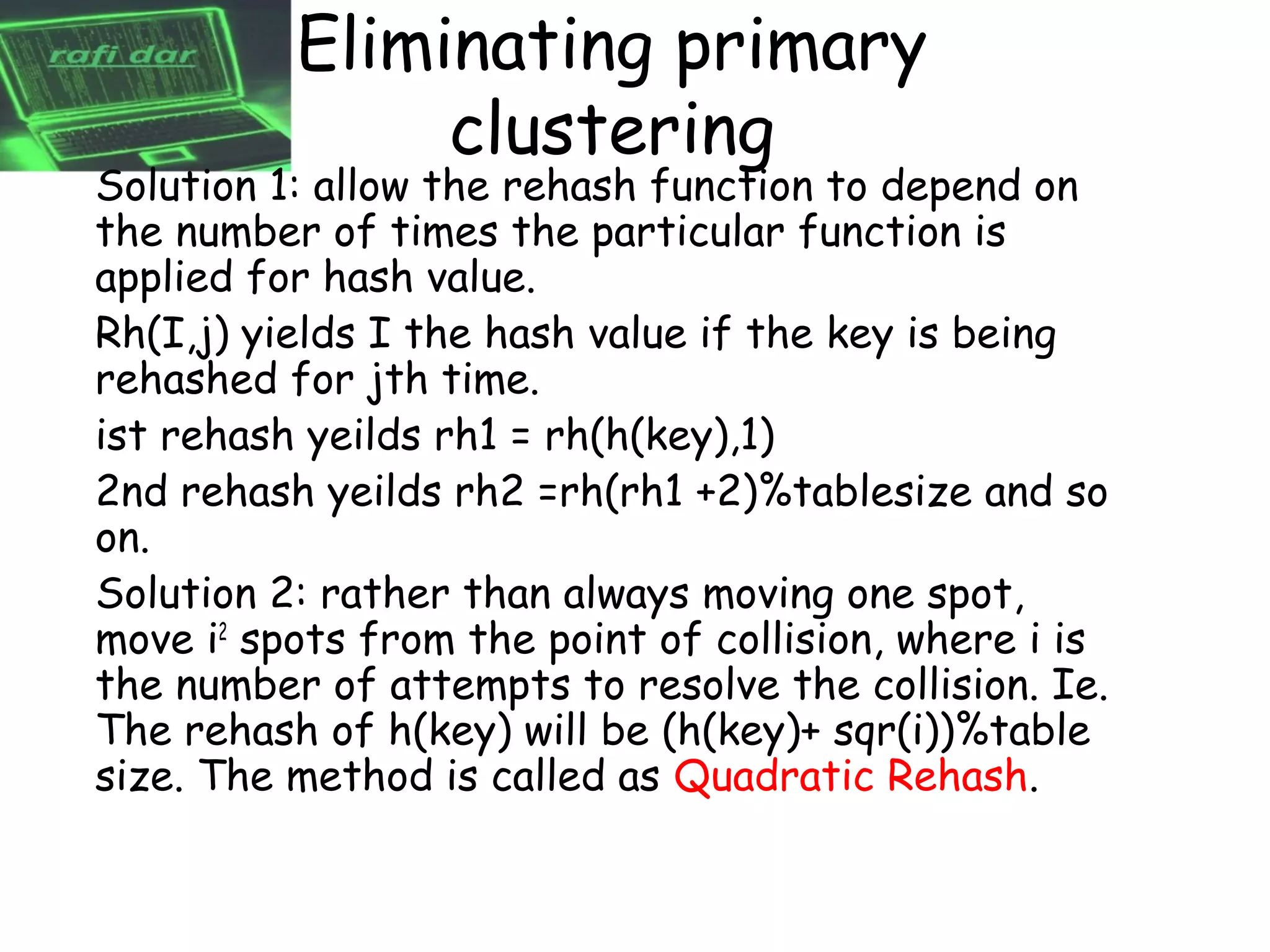This document discusses hashing techniques for storing data in a hash table. It describes hash collisions that can occur when multiple keys map to the same hash value. Two primary techniques for dealing with collisions are chaining and open addressing. Open addressing resolves collisions by probing to subsequent table indices, but this can cause clustering issues. The document proposes various rehashing functions that incorporate secondary hash values or quadratic probing to reduce clustering in open addressing schemes.
